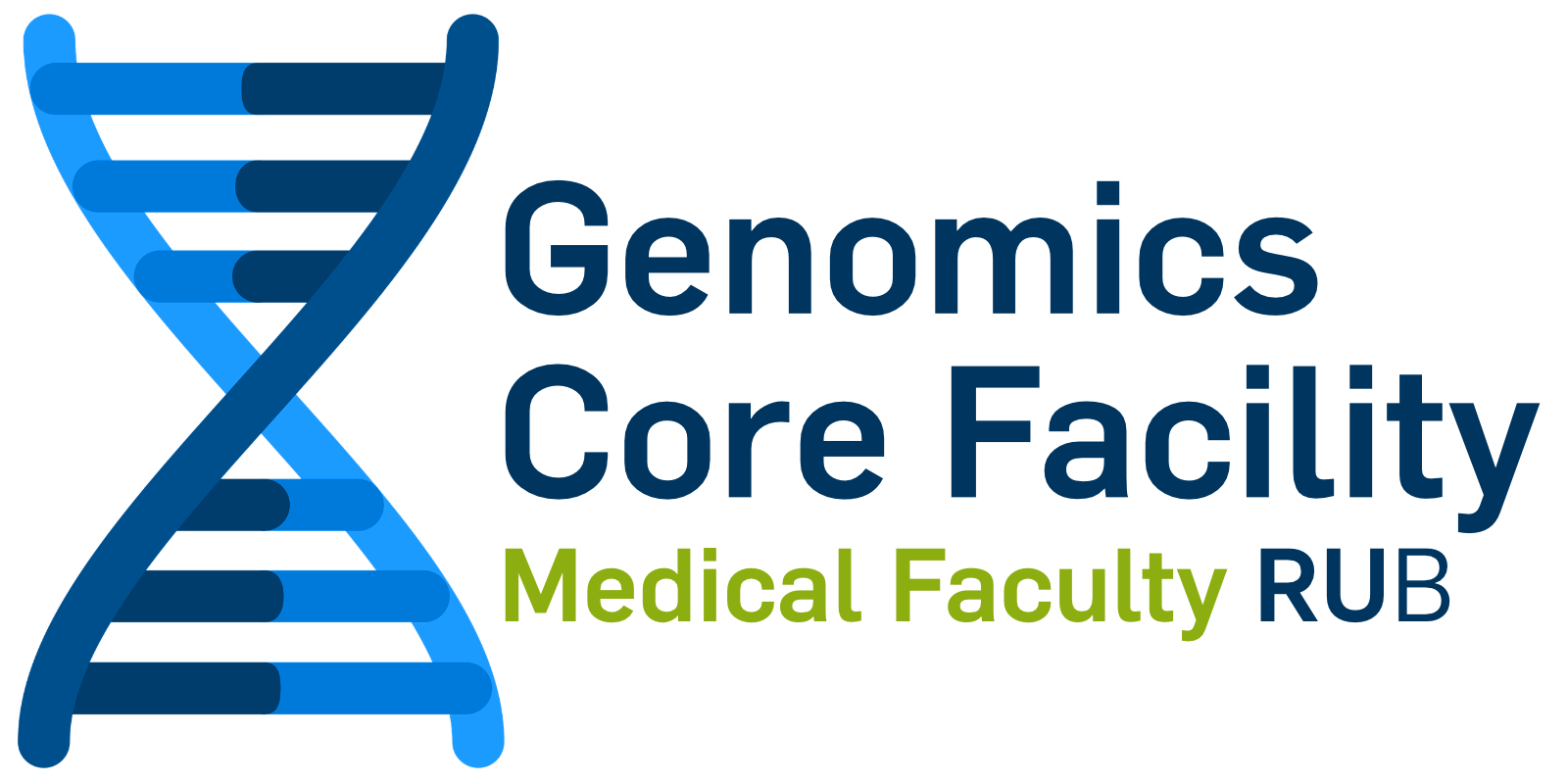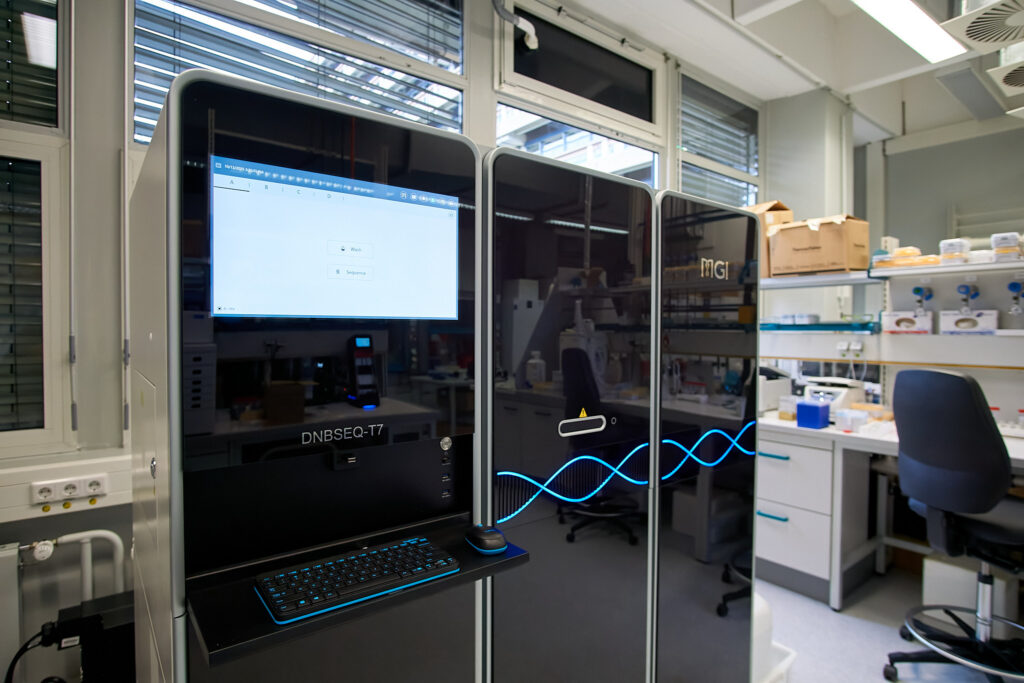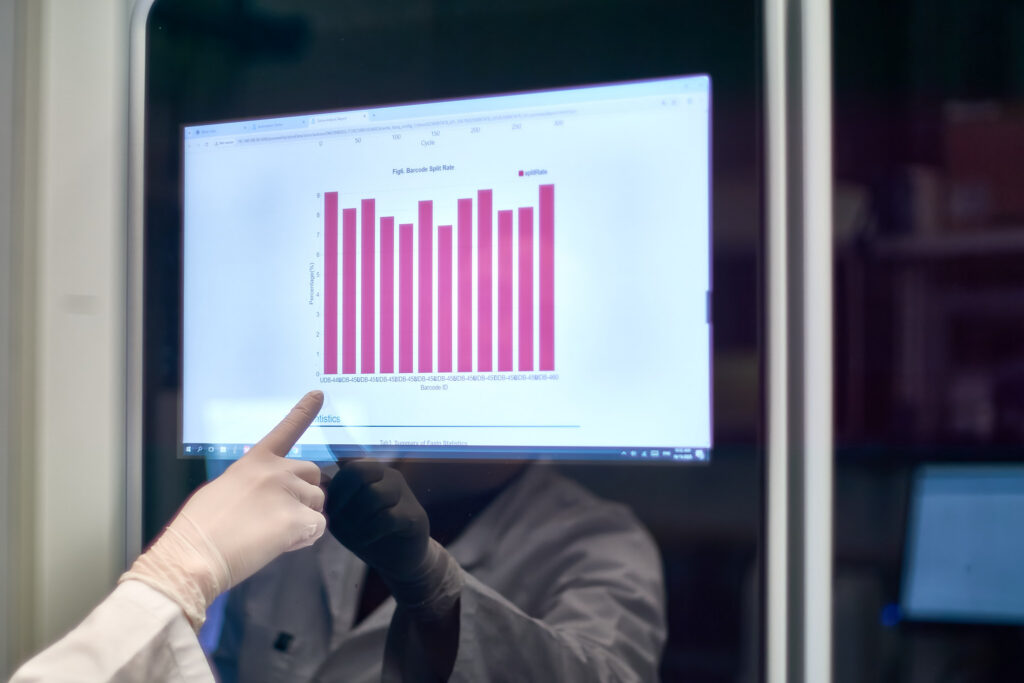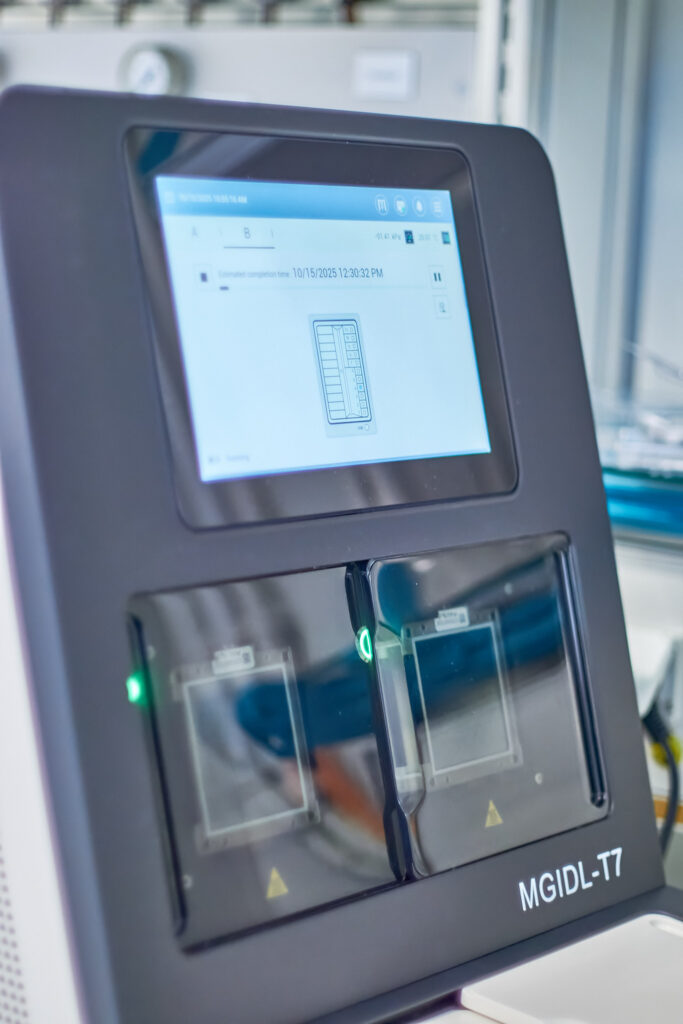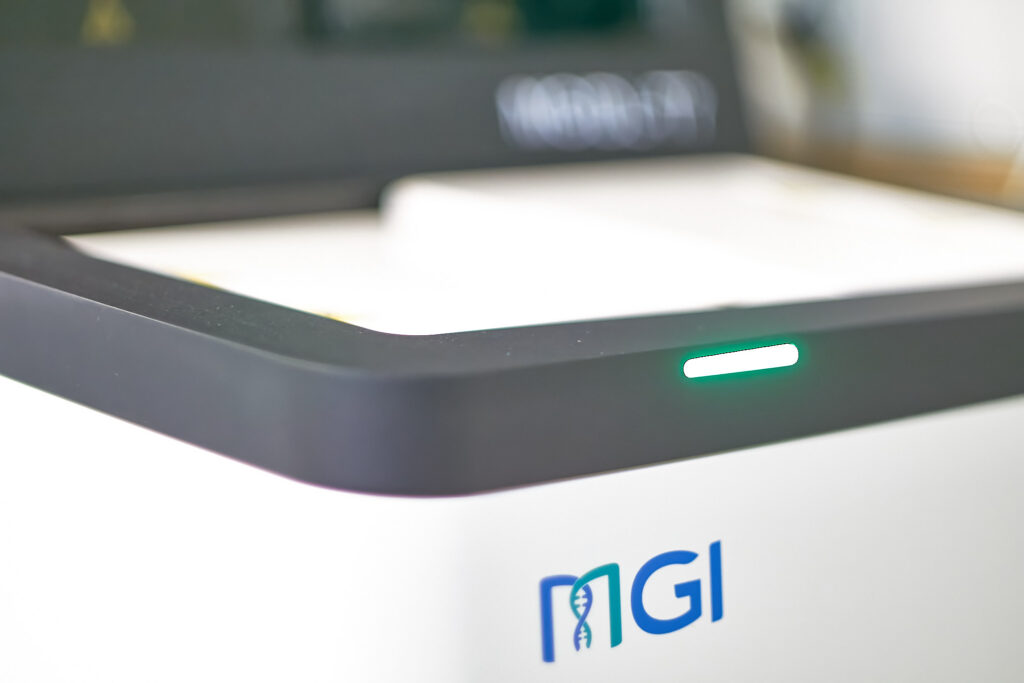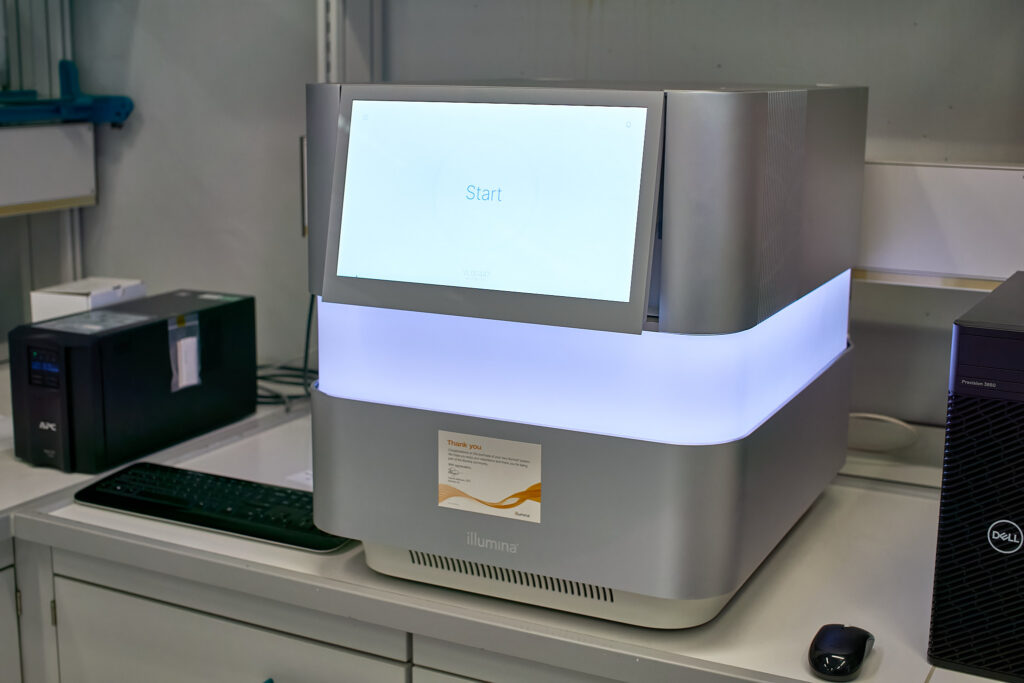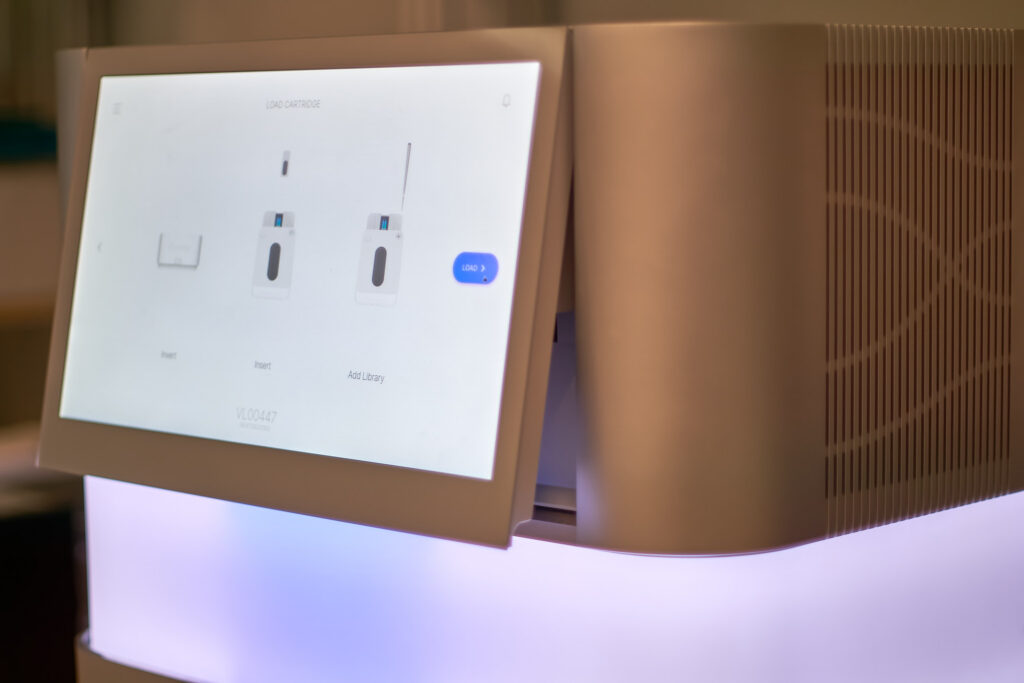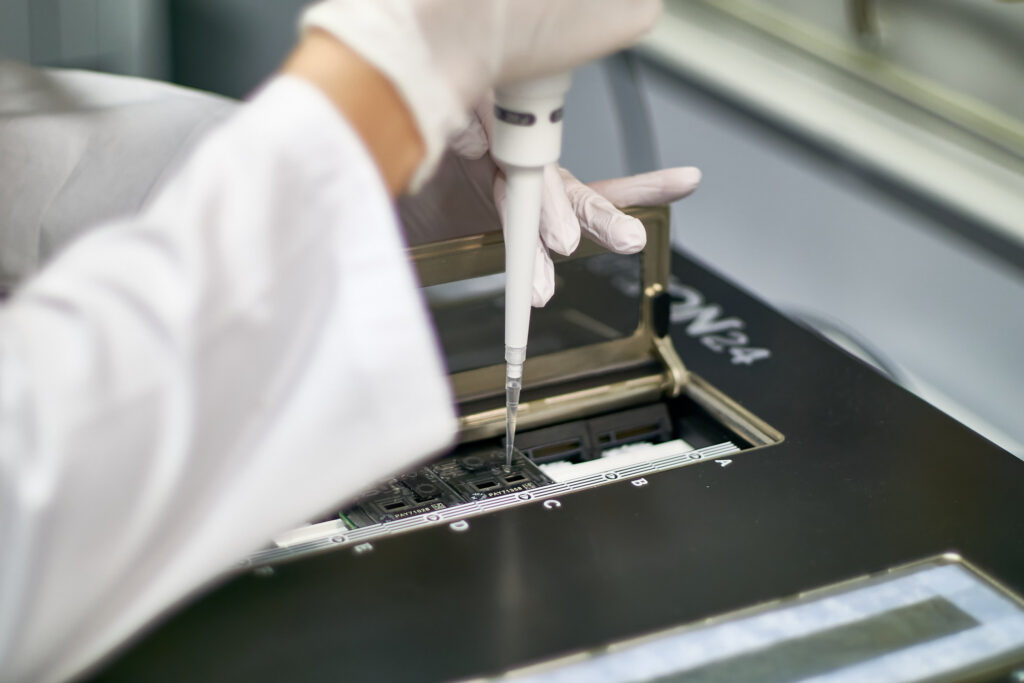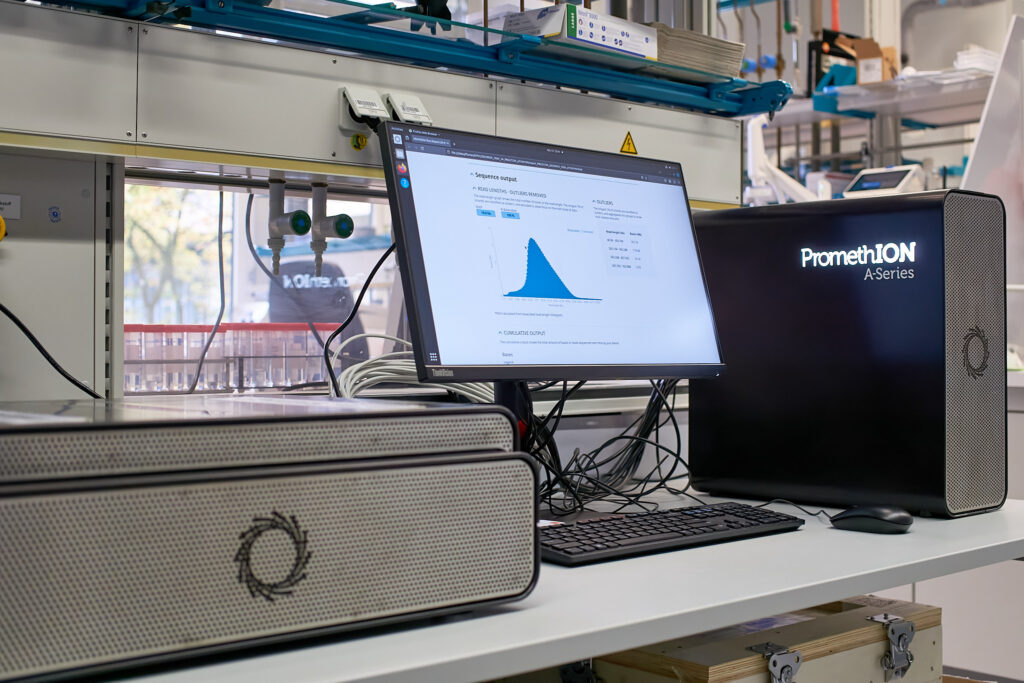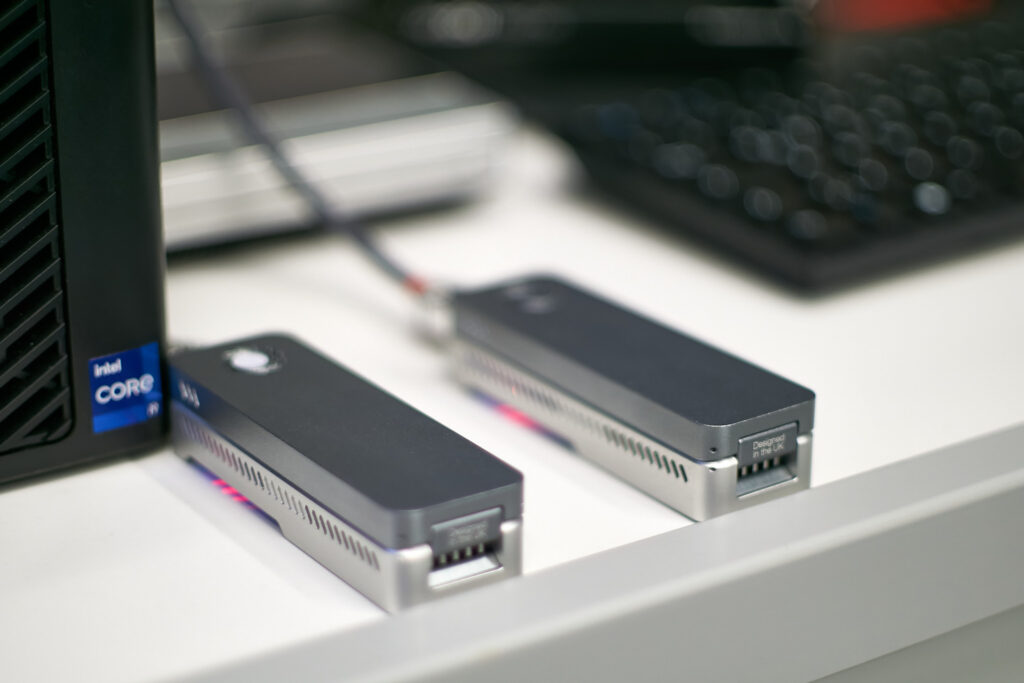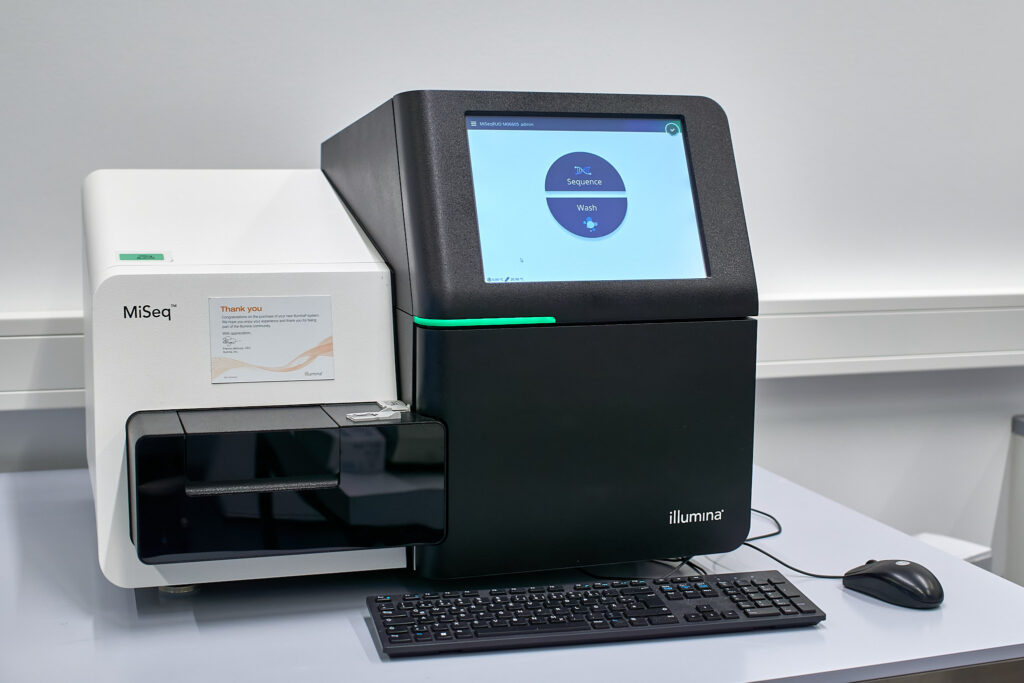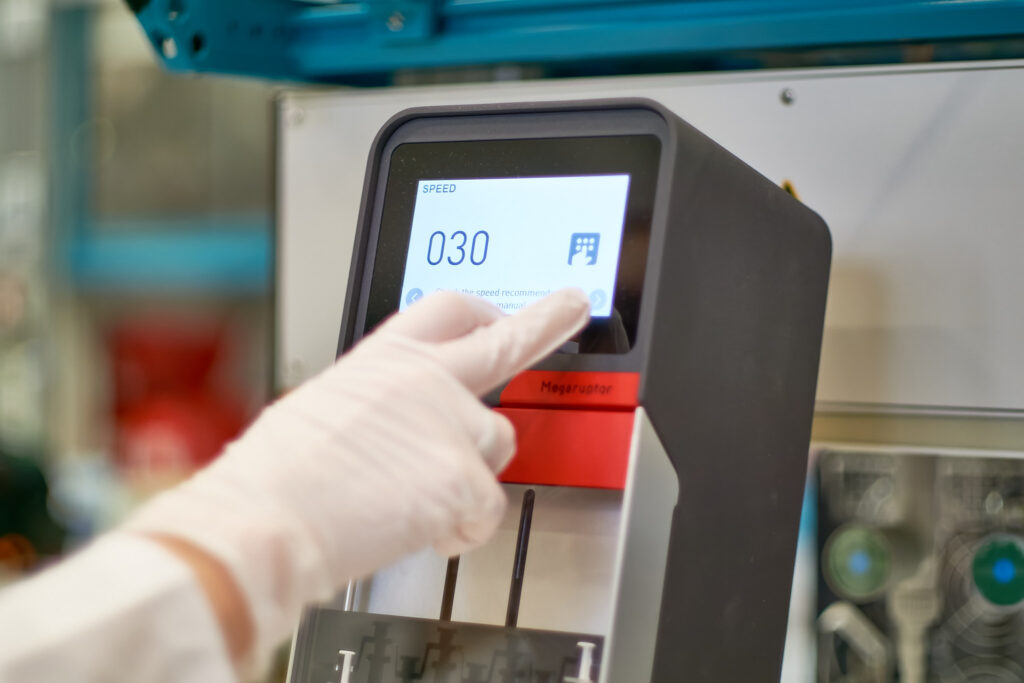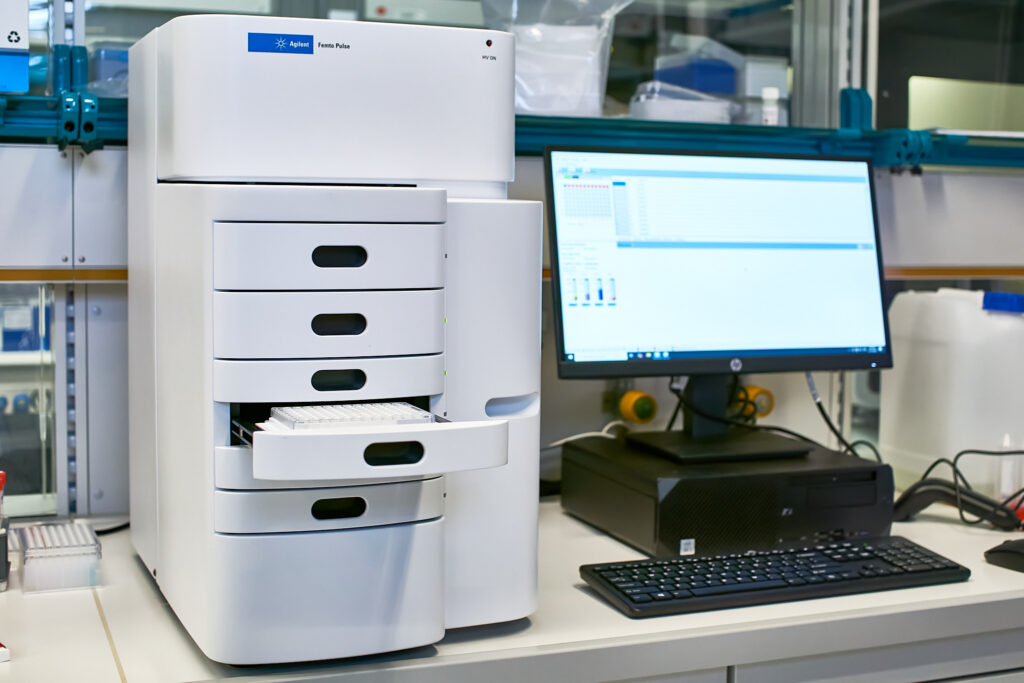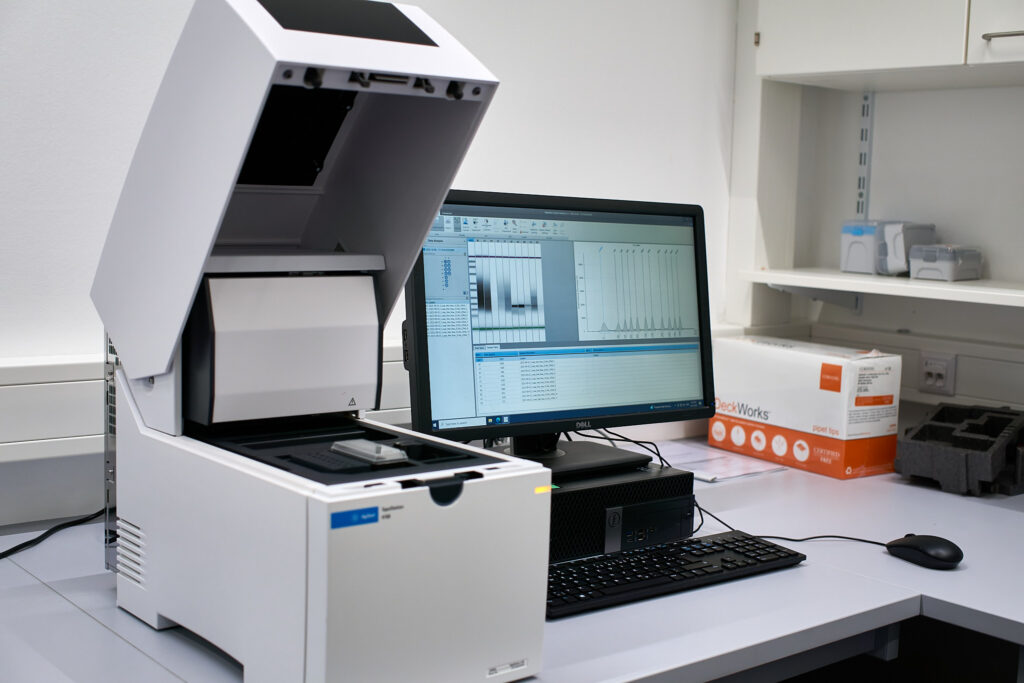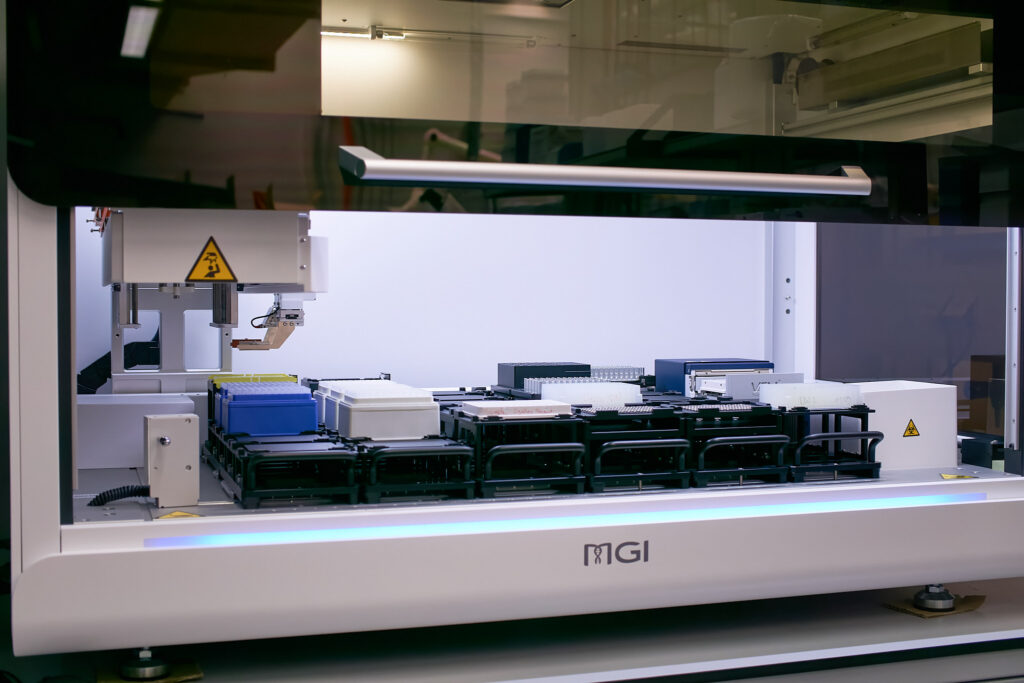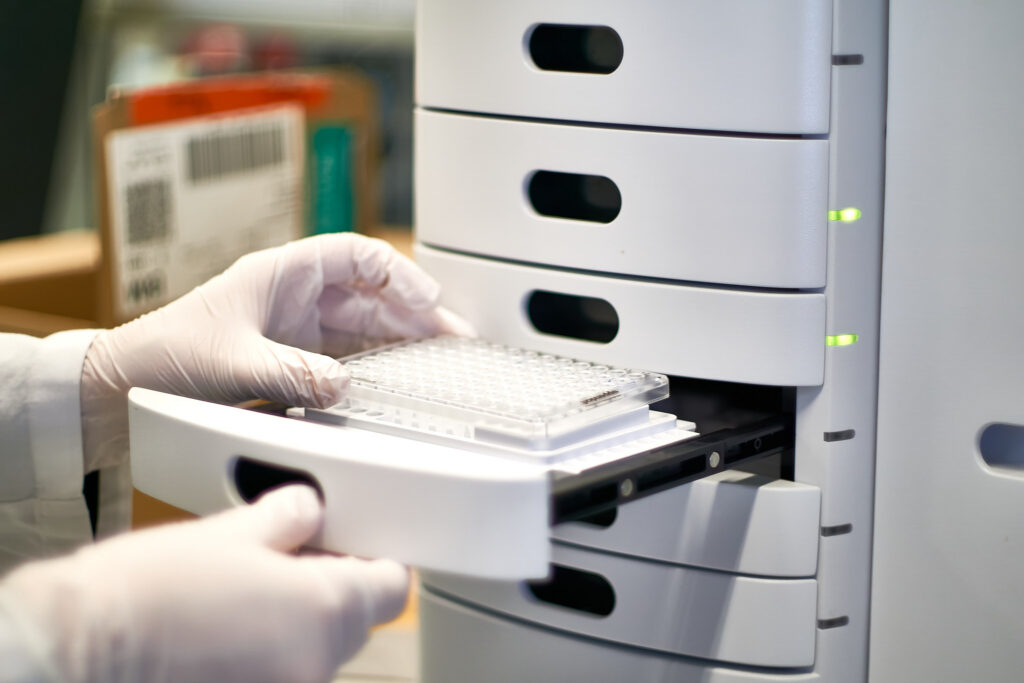
Our Services Overwiew
Basic NGS services
Quality control
- Nucleic acid quantification (Qubit)
- Nucleic acid quality (TapeStation, Femtopulse)
DNA fragmentation (enzymatic, megaraptor)
Sequencing service
- Genomics
- Transcriptomics
- Epigenomics
- Metagenomics
- Single cell sequencing
- Long-read sequencing
Bioinformatic services
Our Equipment

Sequencing Platforms
* If you would like to sequence using NovaSeq X please contact Dr. rer. nat. Jens Christmann, Leitung Molekularpathologie, Email: Jens.Christmann@pathologie-bochum.de, Tel: 0234/302-4993
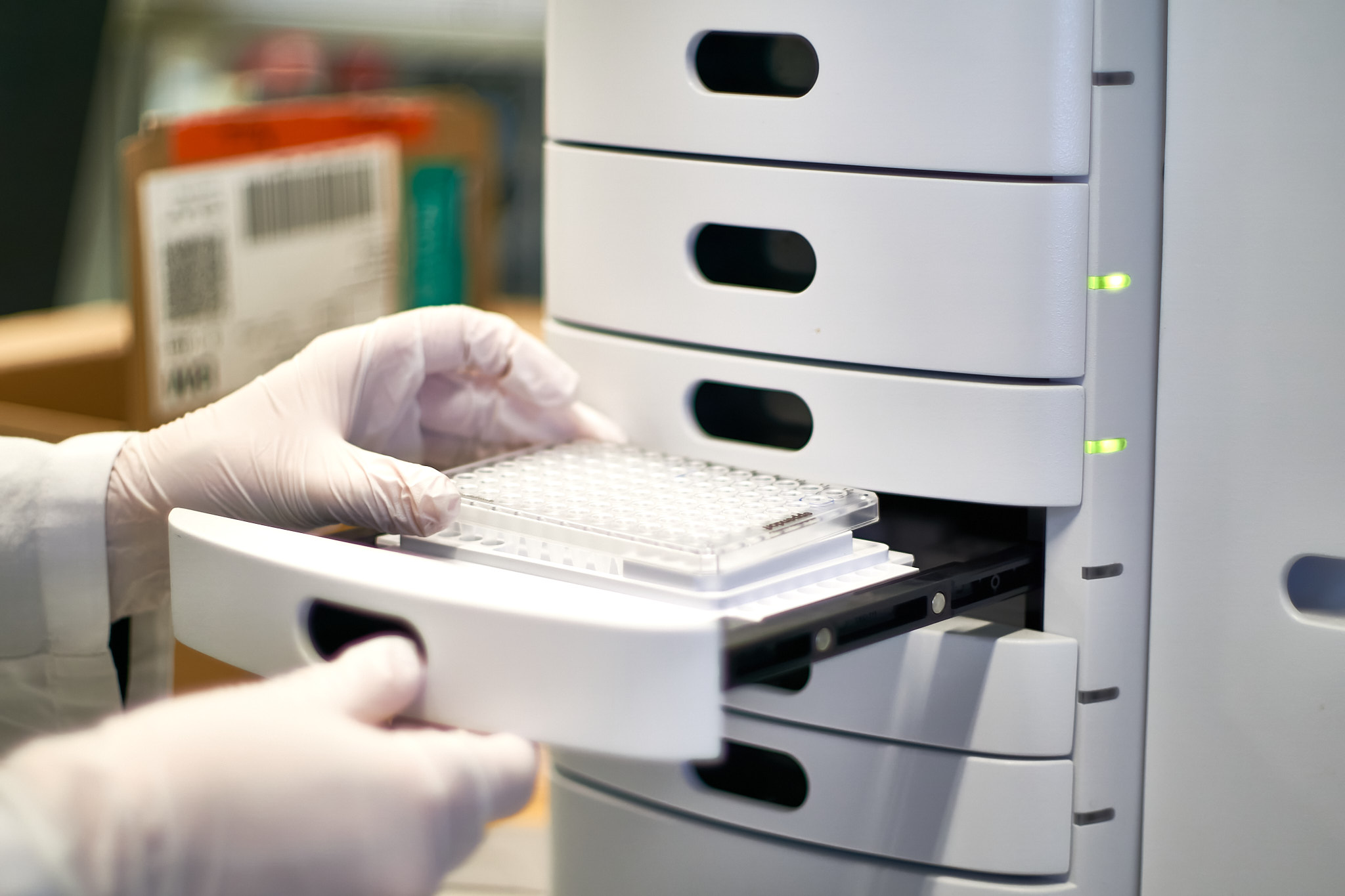
Quality Control
MGI DNMGI DNBSEQ-T7BSEQ-T7
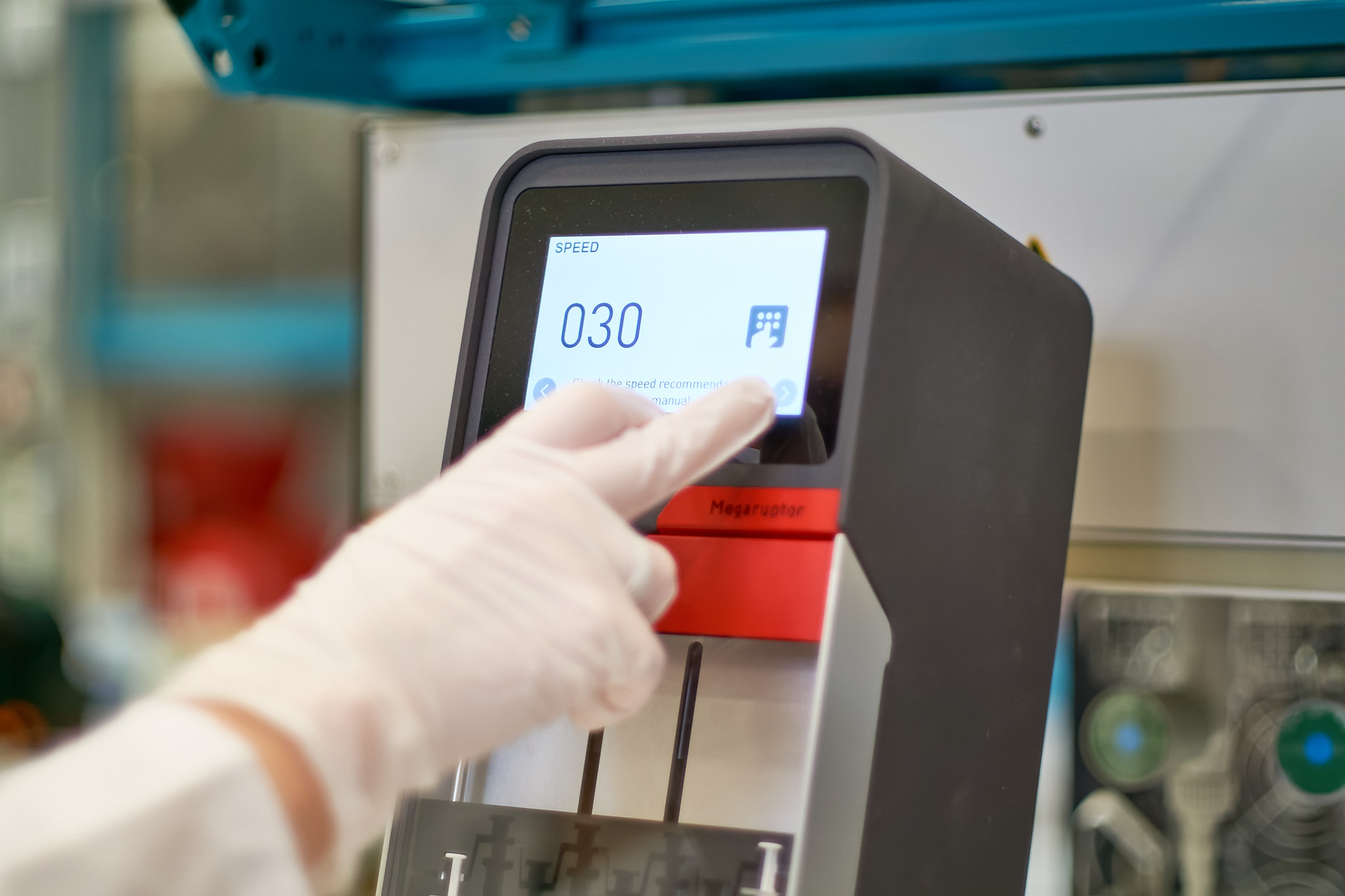
DNA Shearing
MGI DNMGI DNBSEQ-T7BSEQ-T7
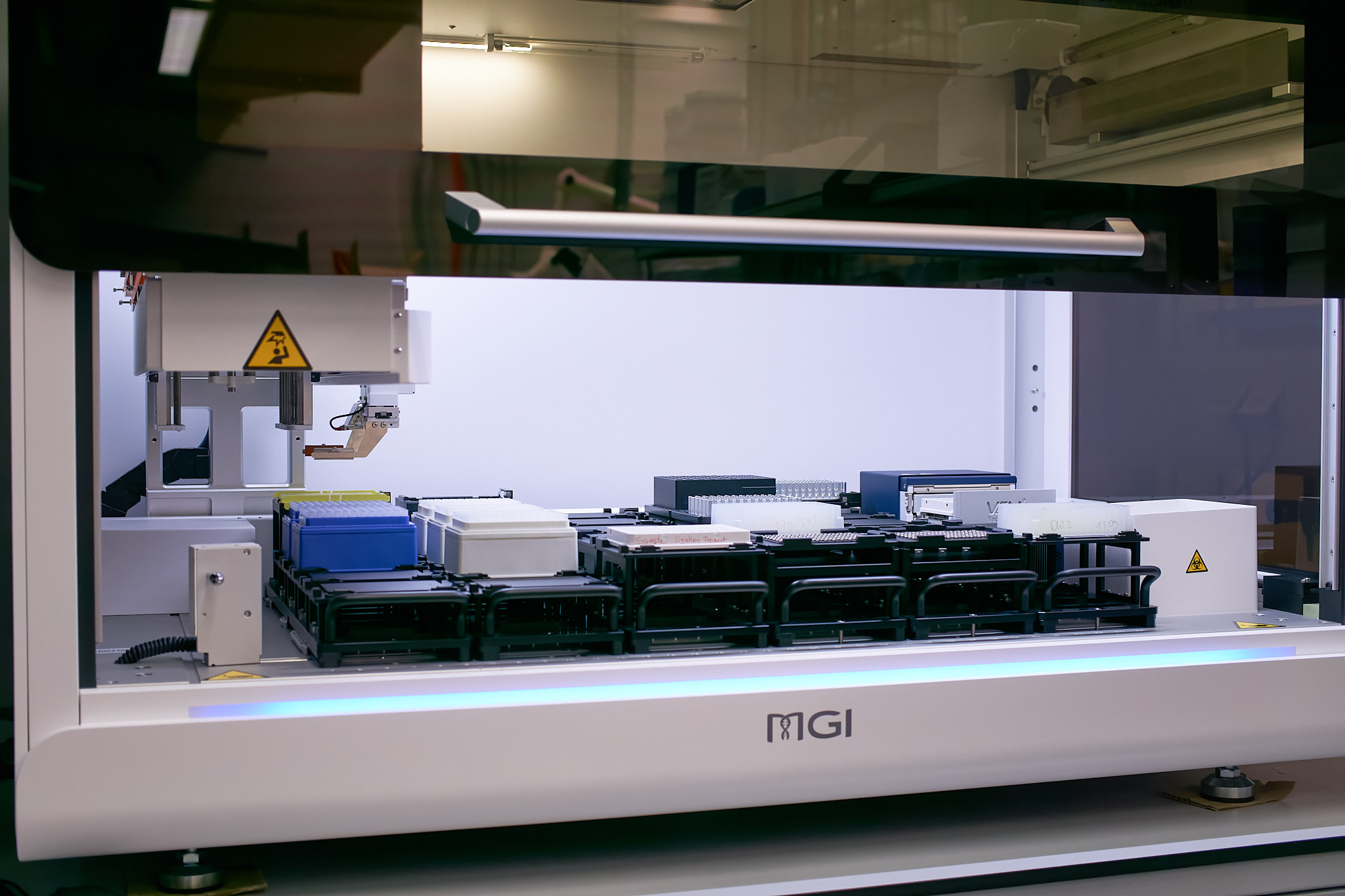
Automation & Workflow
Our Services
Basic NGS Services
High quality (accurate and reproducible) NGS data starts with high quality sample input. Our professional, highly trained staff uses reliable equipment and optimized protocols to ensure you samples meet the requirements for downstream applications.
Quality control
Nucleic acid quantification (Qubit):
Precise estimation of nucleic acid concentration is necessary for successful library preparation. We use the Qubit system to ensure accurate measurement of your DNA and RNA.
Nucleic acid quality (TapeStation, Femtopulse):
In addition to DNA/RNA concentration, accurate assessment of DNA/RNA integrity (degree of nucleic acid degradation) and distribution of fragment sizes is critical for successful sequencing application. We use the TapeStation and Femtopulse systems to detect sample degradation and impurities which can lead to suboptimal or failed sequencing reactions.
DNA fragmentation (enzymatic, Megaraptor)
Many NGS applications require controlled DNA fragmentation to generate uniform libraries for sequencing. Depending on the application we use enzymatic or Megaraptor DNA shearing to reproducibly generate DNA fragments optimal for your sequencing project.
Sequencing Services
We provide full NGS service starting with support in study design, through sample preparation and sequencing, and ending with data analysis. We also offer a ‘sequencing-only’ option for researchers who already have their libraries ready and/or prefer to do their own analysis.
Genomics
- Targeted high coverage sequencing
- Whole exome sequencing
- Whole genome sequencing
Transcriptomics
- 3’mRNAseq for quantification
- Full length mRNAseq for isoform and splicing events detection
- Total RNAseq includes non-coding RNA sequencing
Epigenomics
- Chromatin immunoprecipitation sequencing (ChIP-seq, Cut & Taq)
- Assay for transposase-accessible chromatin sequencing (ATAC-seq)
Metagenomics
- Shotgun and targeted (marker gene) sequencing to analyze total genetic content of a sample, revealing its composition and diversity
Single cell sequencing
- Nucleic acid sequencing at single cell resolution
Long-read sequencing
Short-read NGS (srNGS) methods can only sequence short DNA/RNA fragments which are then reassembled to create a longer sequence. This limits their use for genomic regions of high homology (gene families, pseudogenes) or low complexity (repeat regions), differentiation of isoforms or high resolution of large structural variants. Nanopore sequencing can overcome these limitations with read lengths extending into megabases, allowing in-depth exploration of repetitive regions and complex structural variants, as well as differentiation between different isoforms. In addition, its ability to sequence native DNA/RNA eliminates PCR bias and allows for the identification of base modifications, such as methylation, alongside nucleotide sequence.
Bioinformatic Services
We provide basic bioinformatics service which delivers raw fastq files with essential QC.
Our Team
Scientific Staff
Let’s work together on your
next project
Partner with our Genomics Core Facility to leverage advanced sequencing technologies and expert support, driving your research and clinical breakthroughs.
Get in touch with us
Genomics Core Facility
Dr. Krzysztof Lubieniecki
MA 0/25
Ruhr-Universität Bochum
Universitätsstraße 150
44801 Bochum
Email: gencore@ruhr-uni-bochum.de
Web: gencore.ruhr-uni-bochum.de
